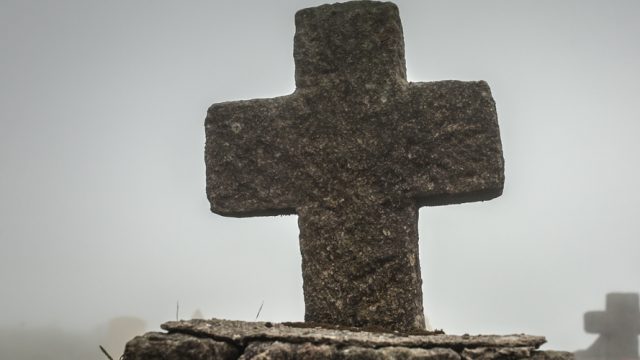Whether you are a traveller or a resident, Dilli always has something new under its sleeve for everyone. The city has gained a reputation for having embraced an urban aesthetic with its vivid and vibrant city scenes. There is, however, a dark juxtaposition, in the very heart of Puraani Dilli, which sends shivers down one’s spine. Amidst the bustling expanse of Kashmere Gate, where one takes in pollution, crowds, colours and life, the Nicholson cemetery breathes its slow breath drawing wanderers into it, living in perfect opposition to the hurried life of the city that surrounds it. This cemetery is anything but ordinary. It is one of the few hidden holders of history that the city has forgotten. Offering a connection to our colonial past, with the bodies of many colonial residents buried here, the Nicholson Cemetery brings back haunting images of the Revolt of 1857.
The walk from the rusty iron gates of the cemetery to the tombstones is interrupted by the grave of Brigadier General John Nicholson, after whom the cemetery has been named. A supercilious British official during the ‘First War of Independence’- as the British preferred to call it- his grave immediately draws attention with its metal fence and its location right next to the residence of the caretaker of this dead zone.
On a bright, sunny Delhi day, one might be easily enticed to spend hours here and experience the timelessness of the space. The graves do have a magnetic pull after all. Even though there are no fancy tombstones, what keeps one coming back or even looking for more is the breadth of the space and the way the sun shines through the nettle, filling in the wanting gaps of the leaves, much like the explorer’s own sense of adventure that needs to be gratified. Not much attention is paid to this cemetery. The graves lie in shambles with overgrown shrubs and grass that you will find yourself entangled in if you try to take a good look at the chipped inscriptions on the tombstones. The tombstones are shocking to look at because one can trace a history of poor life expectancy during the days of the revolt, with children as young as 5 years old buried under them.
What strikes the searching eyes of those who visit this place of departure is what they find as they walk towards the end of the cemetery, big trees and a lone sweeper going about his job in the distance. On a good day, you might find yourself among young people sitting and reading poetry under the shade of a tree, on someone’s short-lived existence, breathing life into the cemetery again.
The Information:
Getting there
Easy metro connectivity. Take the yellow line till Kashmere Gate Metro station. Walking distance from the metro station. The timings may vary at different times of the year: 9:00 a.m.- 5:00 p.m. between October and March and 8:00 a.m.- 6:00 p.m. the rest of the year.




